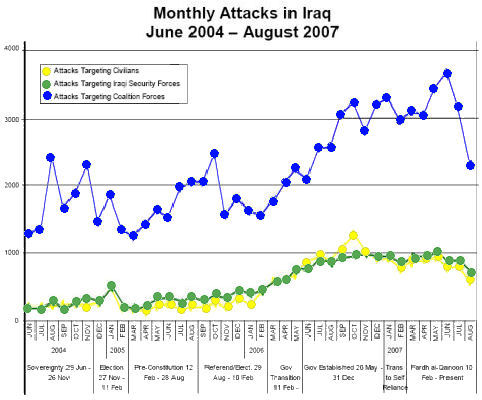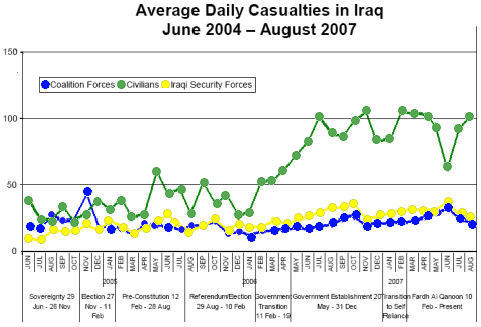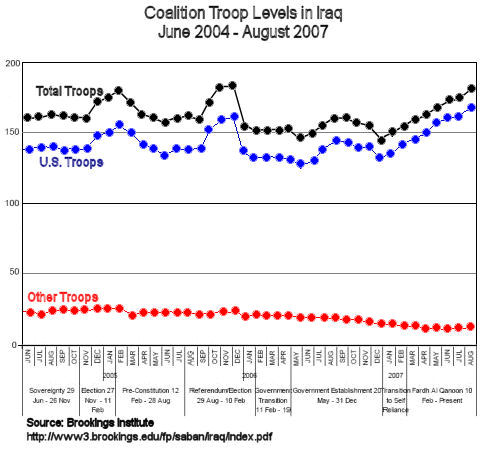Some people just can’t get enough of a good thing – in this case, graphs. I kept wondering about the effect of troop levels on the course of the Iraq War. So I found the most accurate set of figures I could locate [Brookings Institute] and graphed them to the same scale as the recent Pentagon Report. Here’s the comparison [my two rebuilt graphs from the Pentagon Report and the Brookings Institute graph of the Troop Levels]:



-
There was one at the end of 2004 around the time of the first Iraqi Election. As we dropped our troop levels after that, the attacks against U.S. Forces seemed to increase.
-
There was a second Surge at the end of 2005 during the Referendum Election in Iraq – it looks like in response to increasing violence. Like the first Surge, it seemed to decrease the attacks against us. We dropped our troop levels rapidly [during the Transition to Iraqi Rule] and the violence escalated impressively over the next six months. What was different was that the Iraqi Civilian Casualties shot up along with the attacks on us – presumabely indicating the outbreak of a full scale Civil War.
-
The recent Surge [gradually over the first half of 2007] seems to have decreased the attacks on our forces, though it doesn’t seem to have helped the Iraqi Civilians. There’s the anomoly in June. On Petraeus’ graph, it says "surge of offenses" in June. I’m having trouble finding out much about what that means or how it relates to an increase in attacks against us and a decrease in Civilian Casualties.
Check out no quarter site ,it’s Larry Johnson’s new blog with writer Susan writing about Thomas Rick’s interview with Travis Smiley on PBS. Rick’s talks about seeing kindergarten children going to school and thinking that these children may be fighting in Iraq 15 years from now. He basicly says that people can’t give up fighting to end this war. That we should be getting in touch with our Congressional reps. etc. and telling them how we feel instead of just complaining and doing nothing.